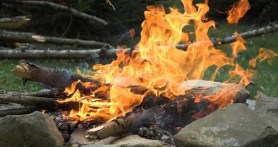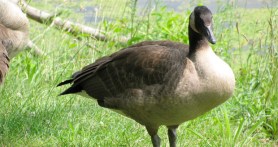

Hawai’i Volcanoes National Park is home to unique geological features and extends from sea level to 13,680 feet. Protected as an International Biosphere Reserve and a UNESCO World Heritage Site, there are plenty of interesting and exciting places to see and explore during your time in Hawai’i Volcanoes National Park. Here are five of our favorites.
Videos by Outdoors
5. The Lava Flows

According to Hawaiian tradition, lava flows are the physical manifestation of Pele, the volcanic deity and creator of new lands. The Hawaiian Islands are made of lava flows that have been built up over thousands of years. When the volcanoes erupt, they add mass to the islands. There are three active volcanoes in the national park, one of which had eruption activity as recently as September 2023.
4. Day Hike to Nahuku (Thurston Lava Tube)

Nahuku was discovered in 1913 and has been a tourist attraction ever since. Take the short hike to the lava tube that once had a river of 2,000 degrees Fahrenheit lava. The Hawaiian name Nahuku means the protuberances, which refers to the lava drippings that used to be visible in the tube. Parking at the trailhead is extremely limited, so plan accordingly.
3. Pu’uloa Petroglyphs

Pu’uloa or Hill-of-long-life is a sacred location for the native people of Hawai’i. Pu’uloa has over 23,000 petroglyph images to view and is located on the southern flank of the Kilauea Volcano. Many of the petroglyphs include circle motifs, as well as anthropomorphs, canoe sails, and feathered capes. Can you spot them all?
2. Punalu’u Beach

Though not technically in Hawai’i Volcanoes National Park, Punalu’u Beach is just 20 minutes away and is known for its black sand. Punalu’u is one of the most famous black-sand beaches in all of Hawai’i, and the sand looks this way due to the high volcanic activity in the area.
1. Hike to the Footprints and Maunaiki

While traveling on foot in 1790, a group of native Hawaiians were caught in a dramatic explosion. These indigenous people left footprints behind that are a reminder today of the geological drama of the volcanoes. These footprints can still be seen today, over two centuries later, in the Ka’u Desert.









